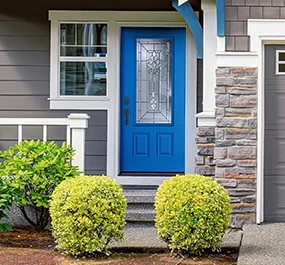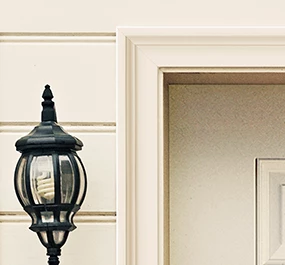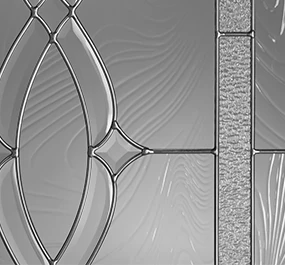It’s one of the most popular, time-tested home styles in America, but which attributes make a home a craftsman home—and why is it so sought after? The reasons for this and the history of the architecture style itself are critical to understanding both a craftsman home’s appeal and its staying power.
What is a Craftsman House?
A home made with the craftsman look in mind promotes the innate style that can be found in the most simplistic designs. On the exterior, these homes will usually put a fully-covered front porch front-and-center, accentuating the space with pillars and other handmade decretory elements. Often, other aspects of the home will seemingly sprout up around and behind that first entry door focal point.
Accents on that porch and other parts of the home are brought to life with exposed natural materials like wood and stone—preferably the same materials found in the region surrounding the home. A craftsman home also showcases double hung windows, putting the emphasis on the decorative and presentational aspects of a house feature that’s usually defined only by its functionality.
On the inside, designers of these homes will put natural wood in the forefront with all design decisions, opting to create a welcoming atmosphere using richly-toned wood that gives each space a deep, lived-in feel. Walls adorned with wide, exaggerated wooden trim give way to wood floors obscured only by the occasional throw rug, if at all. Walls may be wood paneling or simple solid colors, feature inlays used for shelving, and include built-in furniture that can act as anything from a mudroom to a reading nook.
That sort of adaptability can be found throughout the home—if a room doesn’t have an obvious use like a kitchen or bathroom, they’re usually not tailored to one specific purpose and can be furnished and refurnished to fit a family’s changing needs.
The History of Craftsman Houses and Architecture Style
In the late 19th and early 20th centuries, England and the United States were in the midst of an Industrial Revolution, an unprecedented era of innovation and automation unlike anything the world had seen before. In direct response, a counterculture rose up in England that came to be known as the arts and crafts movement—a focus on handmade goods created with local materials. It isn’t quite the same as the current push towards supporting small business as opposed to big box stores, but if you’re drawing those parallels, you’re getting the idea.
The aesthetic of a craftsman home was born out of the American appreciation for the arts and crafts movement. The country’s own Industrial Revolution was in full swing, and an easy place to counter that push towards modernization was at home, where the assembly lines and mass production couldn’t follow. Americans in the architecture, interior design, landscaping and crafting fields took cues from across the pond and built craftsman homes.
The name itself references The Craftsman, a magazine started by furniture maker Gustav Stickley. Stickley was a proponent of the craftsman style and embodied it in his furniture making. Consequently, his magazine also promoted the movement’s positive points and eventually began publishing designs for entire homes based on its principles.
Features that Define Craftsman Homes
The focal point of most craftsman homes is the front door, which can be found at the end of a fully-covered porch. That covering of a craftsman style door features a low, often ornate gabled roof held up by tapered pillars, with the style echoed throughout the exterior of the home. In other parts of the exterior, you’ll find exposed features of the home, such as beams, that are used to emphasize the intended natural look.
That natural look is further expanded on by the wooden siding typical of craftsman homes. The homes were usually painted in rich, welcoming tones that could be described as earthy, but today you’ll see these homes presented in a wide array of colors. Speaking of presentation, aspects presented in craftsman homes can also be found in the prairie style homes popularized by architect Frank Lloyd Wright, as well as the modern rustic movement.
When it comes to those double hung windows, they’ll usually be as large as possible, with ornate accents that don’t encroach on the window’s given purposes of providing light and a line of sight.
The interior’s welcoming, multifunctional spaces are laid out in an open floorplan that prizes functionality over the ornate and lavish. In many ways, the craftsman style was as much a pushback against the Victorian home as it was a response to the ways the Industrial Revolution changed society. For the most part, craftsman homes were found in middle class neighborhoods, an evolving socioeconomic demographic with needs that differed from those who traditionally occupied those sorts of dwellings. The interiors of craftsman style homes were designed to serve that need, while the exteriors were designed to make a statement.
Craftsman Home Exterior Design Ideas
Just like the interior, the unexpected can be utilized to transform a craftsman home’s outside and help it either stand out amongst other similar structures or better reflect the personality of its owner. Painting the outside in one of the aforementioned unorthodox colorways can add a touch of modernity to a craftsman style home. Splashes of color can be utilized elsewhere, such as the roofing, pillars or front porch.
You may also look for inspiration in the roots of the craftsman style itself. Remodel your porch to incorporate more local stone and wood. Utilize that stone in your landscaping, install new windows that adhere to the established style, or add new ornate decorations to be included in various focal points of the home’s exterior. You could also transform the home’s main focal point with a new craftsman style door.
If you aren’t comfortable with construction or don’t want to pay for the job to be completed by professionals, changing the exterior of a craftsman style home doesn’t necessarily have to involve installation of any kind. Porches can be adorned with decorations that enhance your home’s curb appeal, while every inch of your property offers the opportunity to tie features and structures to the home’s architectural style.
Craftsman Home Interior Design Ideas
If you’re looking for ways to mix up the interior of a craftsman style home, there’s one question that should drive all of your decisions: how far are you willing to go?
Paint can be utilized to add a new dimension to your rooms, but the best choices for these kinds of homes are usually very light or very dark colors. These colors work well with the rich woods they’ll be paired beside. You can also use paint to highlight unique architectural features or denote specific spaces in a room, such as a reading nook.
The talk about this home style’s open floor plan and multi-purpose rooms isn’t for nothing, either. If you have an open home and you’re open to rearranging its contents, you can spend the afternoon giving yourself a brand new interior layout. You may find that you’ve improved the flow of your home, begun utilizing old spaces for exciting uses, or put some separation between loud rooms and quieter ones.
Within a strongly established style like a craftsman home, there’s also room to artfully utilize the unexpected. It isn’t easy, but certain desks, chairs, or other pieces of furniture that seem like they shouldn’t fit the style can become loved fixtures beside that lived-in look. Since the style has ingrained itself so deeply into American architecture, the purpose of the unexpected piece should be perceived well, like a new take on the aesthetic instead of an out-of-place, poor decision.
Explore Home Renovation with Plastpro
One of the best ways to modernize a craftsman style home—or any style home—is by replacing its front door. Plastpro’s fiberglass doors modernize a home’s existing amenities by adding energy efficiency, impact protection and door longevity the moment it's installed. However, just because they’re made with modern materials and technologies doesn’t mean they need to modernize the look of your home.
Plastpro’s fiberglass doors are tailored to a number of existing architectural styles and present as everything from strikingly classic wood to a modern monochrome. They can also be custom ordered to fit a variety of frame sizes, making them a great option for door replacement on a wide variety of homes. Find a dealer and begin exploring what Plastpro offers for your home.



